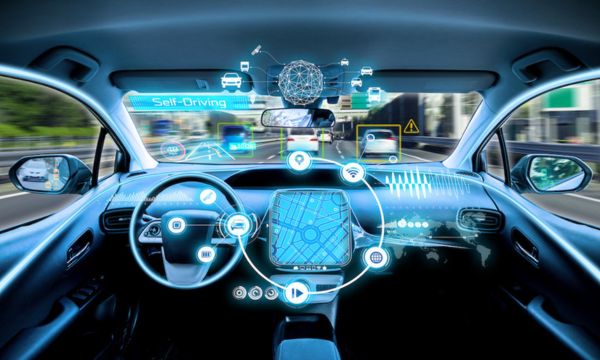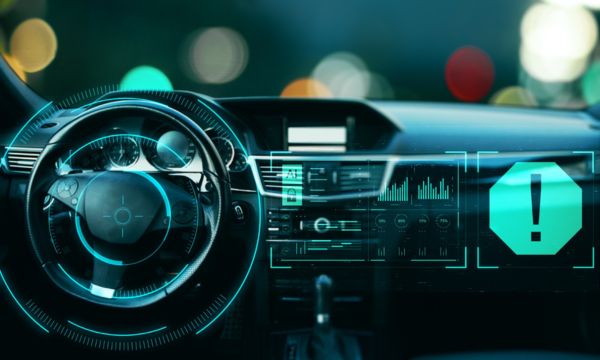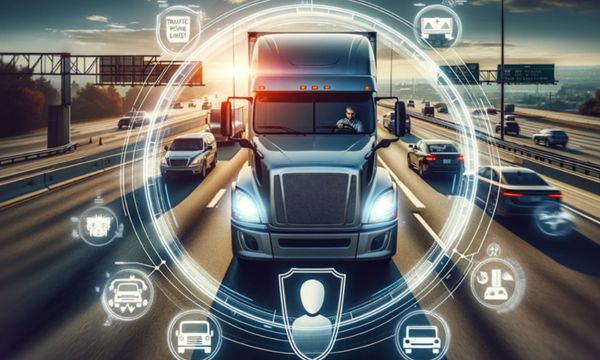Understanding AI in Autonomous Vehicles
Self-driving cars, also known as self-driving cars, are a major technological advancement that relies heavily on artificial intelligence (AI).
The goal of the advanced use of artificial intelligence in cars is to make our roads safer, more efficient, and more convenient.
We’ll look at the details of artificial intelligence in self-driving cars, including the tools behind them, the problems they face, and the impact they can have.
1. Perception and Understanding
Vehicles that can drive themselves depend on being able to correctly perceive and understand their surroundings.
AI-powered sensors are important to this process, as they allow the car to understand its environment in real-time.
Light detection and ranging (LiDAR), radar, and ultrasonic sensors work together to give the driver a complete picture of what is happening around the car.
- Camera: Seeing things, road signs, and lane markings is very important to identify them. A type of artificial intelligence called a convolutional neural network (CNN) is very good at recognizing images and is often used to process data from cameras.
- LiDAR: LiDAR uses laser beams to measure distances and create accurate 3D maps of the area. Artificial intelligence algorithms look at this data to find people, other vehicles, and obstacles. To understand lidar data, you need to use machine learning methods such as grouping and classification.
- Radar: Radar sensors emit radio waves that can detect objects and tell you their distance and how fast they are moving. Signal processing algorithms, powered by artificial intelligence, help filter and analyze radar data to help the vehicle understand its surroundings.
2. Decision Making Algorithm
Once a car knows what’s going on around it, it must make quick, right decisions to stay safe. Self-driving vehicles use complex algorithms to make decisions.
These algorithms take into account many factors, such as traffic conditions, road signs, and the behavior of other drivers.
- Path Planning: Path planning algorithms find the best route for a vehicle by looking at factors such as road conditions, traffic regulations, and potential obstacles. A form of machine learning called reinforcement learning, allows the car to learn from its mistakes and change the choices it makes based on what others say.
- Collision avoidance: AI algorithms continuously monitor the possibility of hitting nearby objects and take steps to avoid them. Some of these steps include changing lanes, changing vehicle speed, or initiating emergency braking. Collision prevention systems work even better when they use deep learning models, especially neural networks.
- Traffic management: Self-driving cars must also be able to talk to other cars on the road. For example, cooperative adaptive cruise control allows cars to talk to each other, improving traffic flow and reducing congestion. These communication methods use artificial intelligence to understand and respond to signals from nearby vehicles.
3. Data for Machine Learning and Training
Machine learning is an important part of artificial intelligence for self-driving cars. To ensure they work well in different real-world situations, these systems require lengthy training using large amounts of diverse and appropriate data.
- Supervised learning: Self-driving cars use labeled data to teach, and AI systems learn to connect input data (information from sensors) to outputs (the right things to do). Supervised learning is used for tasks such as recognizing images and finding traffic signs.
- Unsupervised learning: When large amounts of labeled data are unavailable, AI systems can use unsupervised learning methods, such as clustering, to find trends and relationships in the data. This is especially useful when discovering strange things and adapting to new situations.
- Reinforcement learning: This approach allows self-driving cars to learn by making mistakes, allowing them to make better decisions. The system gets positive feedback when it does the right thing and negative feedback when it does the wrong thing. This helps it make better decisions over time.
4. Challenges and Considerations
Although great progress has been made, there are still some issues that need to be resolved before artificial intelligence can be used in self-driving cars.
- Safe and reliable: It is very important to ensure that artificial intelligence systems are safe and reliable. Autonomous vehicles must be able to function flawlessly in all kinds of unpredictable environments. This requires a thorough testing and approval process.
- Ethical issues: Artificial intelligence algorithms need to make quick choices in complex scenarios, which raises ethical concerns. For example, figuring out how vehicles can prioritize the safety of passengers over pedestrians raises important ethical questions facing society.
- Legal framework: A clear and complete legal framework is needed for the use of self-driving cars. It will be difficult for governments and regulators to develop standards that ensure self-driving cars are safe and can work with other vehicles.
5. Impact on the Future
The widespread use of autonomous vehicles is likely to change the way people travel, which will have many social, economic, and environmental impacts.
- Reduce Road Accidents: Most road accidents happen due to human errors. Self-driving cars can eliminate or greatly reduce the need for human involvement in driving, significantly reducing the number of accidents and fatalities on the road.
- Increased efficiency: Self-driving cars can improve fuel economy, make traffic flow more smoothly, and reduce traffic congestion. Transportation networks can be made more efficient through collaborative systems that allow cars to talk to each other.
- Urban planning and infrastructure: The introduction of autonomous vehicles can have an impact on urban planning and infrastructure development. Cities may need to make changes to accommodate new parking options, traffic patterns, and public transportation.

Understanding-AI-in-Autonomous-Vehicles (Source – Google)
Conclusion
The use of artificial intelligence in autonomous vehicles is a major step forward for the automotive industry.
The combination of advanced sensing, perception, and decision-making skills can change the way we think about transportation.
But before the full benefits of self-driving cars can be realized, safety, ethics, and regulatory issues must be addressed.
As technology advances and these problems are solved, it is clear that the future of transportation depends on the continued development of artificial intelligence in autonomous vehicles.
FAQs
1. What is a self-driving car?
A self-driving car, also called a self-driving car, is a car that can drive and navigate independently without human assistance.
It can observe its environment and use advanced technologies such as artificial intelligence (AI), sensors, and algorithms to decide how to stay safe.
2. What role does artificial intelligence play in autonomous vehicles?
Artificial intelligence is important in self-driving cars because it powers the systems that sense, make decisions, and control the car.
Sensor data is processed by machine learning algorithms, allowing the vehicle to understand and understand its environment, make informed choices, and stay safe.
3. What types of sensors are used in self-driving cars?
Self-driving cars use equipment such as cameras, lidar (light detection and ranging), radar, and ultrasonic equipment.
These sensors work together to give the car a complete understanding of its environment, allowing it to see objects such as people, other cars, and obstacles.
4. How do self-driving cars decide what to do on the road?
Self-driving cars use complex algorithms to make decisions, taking into account factors such as traffic conditions, road signs, and how other people drive.
Path planning algorithms find the best path, and artificial intelligence is used in collision avoidance systems to find potential risks and reduce them.
5. What is machine learning and how does it play a role in self-driving cars?
A branch of artificial intelligence called machine learning uses large amounts of data to teach computers how to work better. This allows the system to learn and improve.
Self-driving cars use machine learning to, for example, recognize images, find traffic signs, and make decisions. This makes the car more flexible and better able to handle different situations.
6. What problems will arise from the use of artificial intelligence in self-driving cars?
Ensuring that AI systems are safe and reliable, dealing with ethical issues that arise when making decisions, and establishing a complete legal framework are all challenges.
The need for large amounts of training data and the fact that technology continues to evolve are also issues in the development and use of autonomous vehicles.
 Enhancing Safety: AI-Driven Collision Avoidance
Enhancing Safety: AI-Driven Collision Avoidance
As technology continues to change, artificial intelligence (AI) is becoming increasingly important in many areas. One very […]
More Revolutionizing Driving: AI Integration in Cars
Revolutionizing Driving: AI Integration in Cars
The automotive industry is undergoing a major transformation as artificial intelligence (AI) is applied to cars. As […]
More AI-Based Driver Monitoring Improves Road Safety and Performance
AI-Based Driver Monitoring Improves Road Safety and Performance
The automotive industry has undergone dramatic changes in recent years as artificial intelligence (AI) has been built […]
More